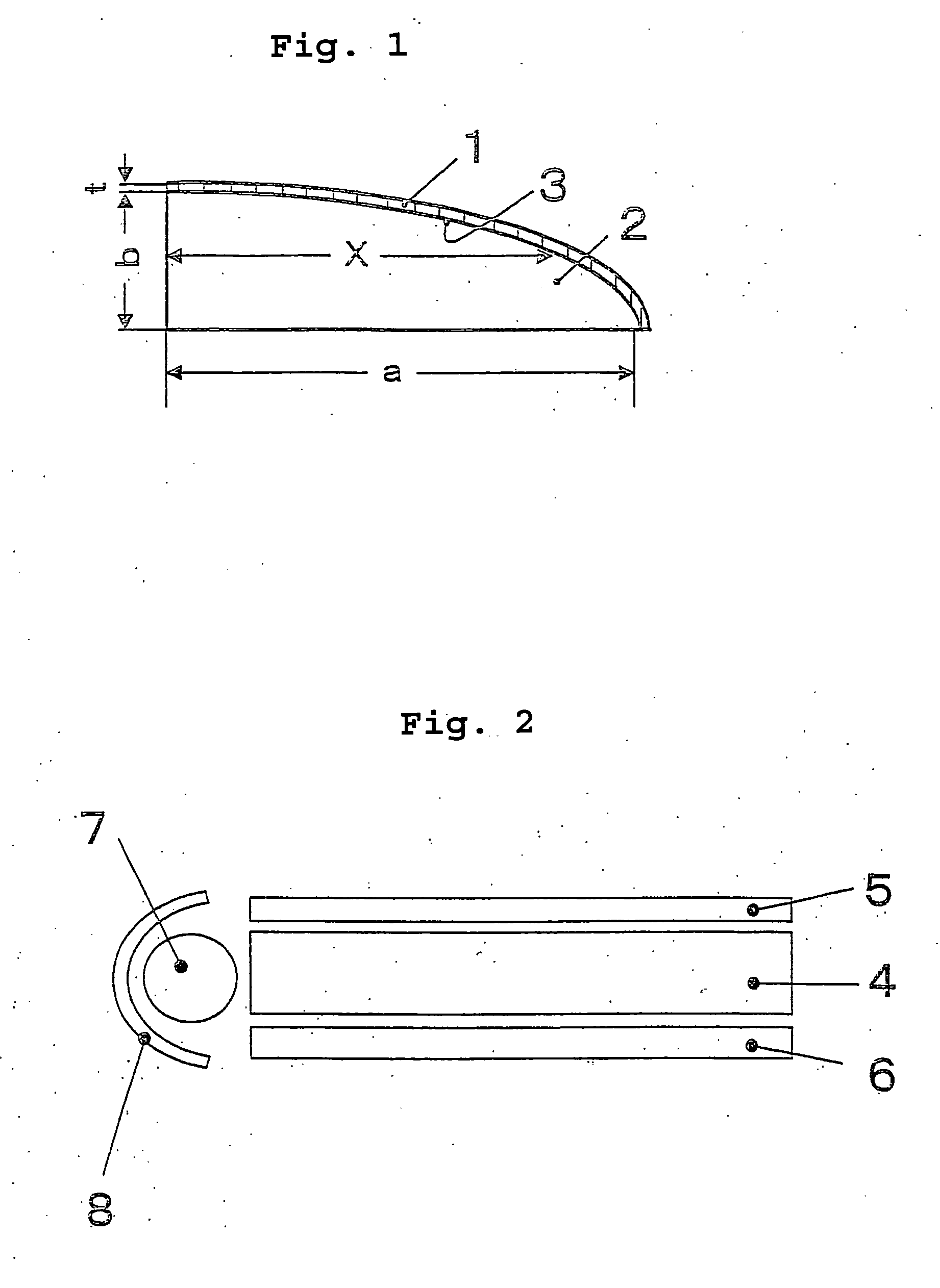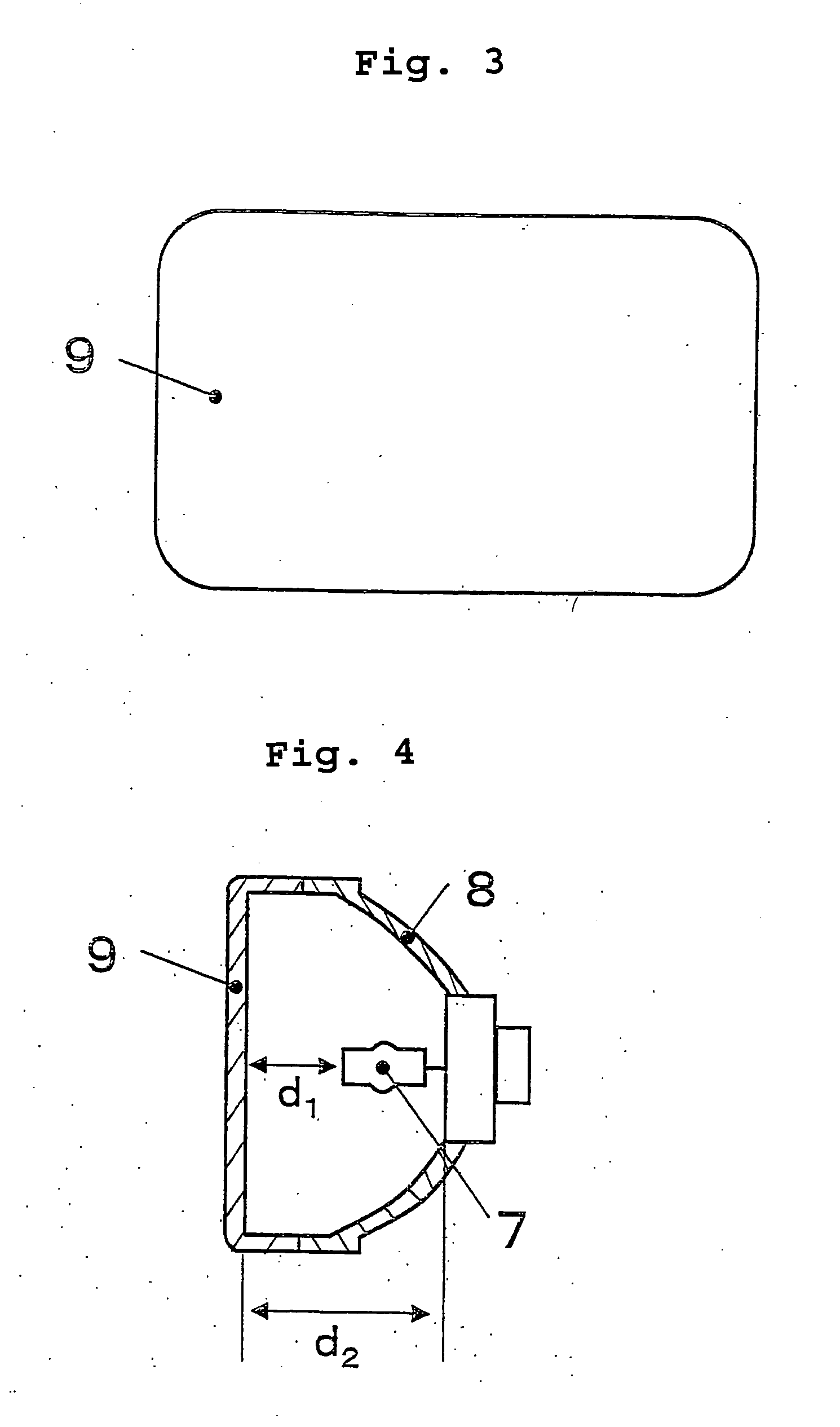Thermoplastic polymer, process for producing the same, and molded article
a thermoplastic polymer and thermoplastic copolymer technology, applied in the direction of instruments, optical elements, optics, etc., can solve the problems of large birefringence, difficult to achieve the effect of preventing discoloration of polymers, increasing polymerization yield and polymerization rate, and increasing polymerization temperatur
- Summary
- Abstract
- Description
- Claims
- Application Information
AI Technical Summary
Benefits of technology
Problems solved by technology
Method used
Image
Examples
examples 4 to 16
, Comparative Examples 2 to 11
[0101] As in Table 4, each copolymer (A) that had been obtained in Reference Example (1) was processed in a double-screw extruder (TEX30 (by Japan Steel Work, L / D=44.5) or PCM-30 (Ikegai Tekko, L / D=28.0)) for intramolecular cyclization to be a thermoplastic polymer in the form of pellets. The number of screw revolutions was 100 rpm, the feed rate of the starting copolymer was 5 kg / h, and the cylinder temperature was 290° C. Except in Example 15, the system was purged with nitrogen at a rate of 10 liters / min through the hopper during extrusion.
[0102] Next, the pellets were dried at 100° C. for 3 hours, and then injection-molded into test pieces, using an injection molding machine, Meiki's M-50AII-SJ. The molding condition was as follows: The molding temperature was the glass transition temperature of the polymer +140° C.; the mold temperature was 80° C.; the injection speed was 88 cm3 / sec; the injection time was 10 seconds; the cooling time was 30 secon...
example 17
[0111] Using ethylene glycol monoethyl ether for a polymerization solvent, a mixture of the following substances was prepared. The mixture was fed into a 2-liter, full-mixing polymerization reactor at the rate of 1 liter / h, and polymerized at a temperature of 90° C. for 120 minutes.
Methacrylic acid 37 parts by weightMethyl methacrylate 43 parts by weightStyrene 20 parts by weightEthylene glycol monoethyl ether 55 parts by weightN-octylmercaptan0.15 parts by weight1,1-Di-tert-butylperoxycyclohexane0.01 parts by weight1,1,3-tris(2-methyl-4-ditridecylphosphite-0.05 parts by weight5-t-butylphenyl) butane
[0112] In this case, the polymer solution could have a solid content of 50% by weight. This was fed into a vacuum evaporator at 260° C. under 20 Torr, and kept therein for 30 minutes. Then, this was taken out to obtain a thermoplastic polymer having glutaric anhydride units. Thus obtained, the thermoplastic polymer was analyzed with an IR spectrophotometer, and it gave an absorptio...
example 18
[0116] The thermoplastic polymer of Example 9 was injection-molded to form a tabular molding having a size of 200 mm×120 mm×3 mm. FIG. 2 is a schematic cross-sectional view of an optical waveguide tester, which was fabricated by putting the tabular molding 4 between a diffusion sheet 5 and a reflection sheet 6. A light source 7 and a reflector 8 were fitted to it, and the tabular molding 4 therein was tested for optical conductivity. As a result, it was found that the tabular molding in this Example has good transparency and optical conductivity, and is therefore useful as an optical waveguide.
PUM
| Property | Measurement | Unit |
|---|---|---|
| yellowness index | aaaaa | aaaaa |
| temperature | aaaaa | aaaaa |
| glass transition temperature | aaaaa | aaaaa |
Abstract
Description
Claims
Application Information
 Login to View More
Login to View More - R&D
- Intellectual Property
- Life Sciences
- Materials
- Tech Scout
- Unparalleled Data Quality
- Higher Quality Content
- 60% Fewer Hallucinations
Browse by: Latest US Patents, China's latest patents, Technical Efficacy Thesaurus, Application Domain, Technology Topic, Popular Technical Reports.
© 2025 PatSnap. All rights reserved.Legal|Privacy policy|Modern Slavery Act Transparency Statement|Sitemap|About US| Contact US: help@patsnap.com



